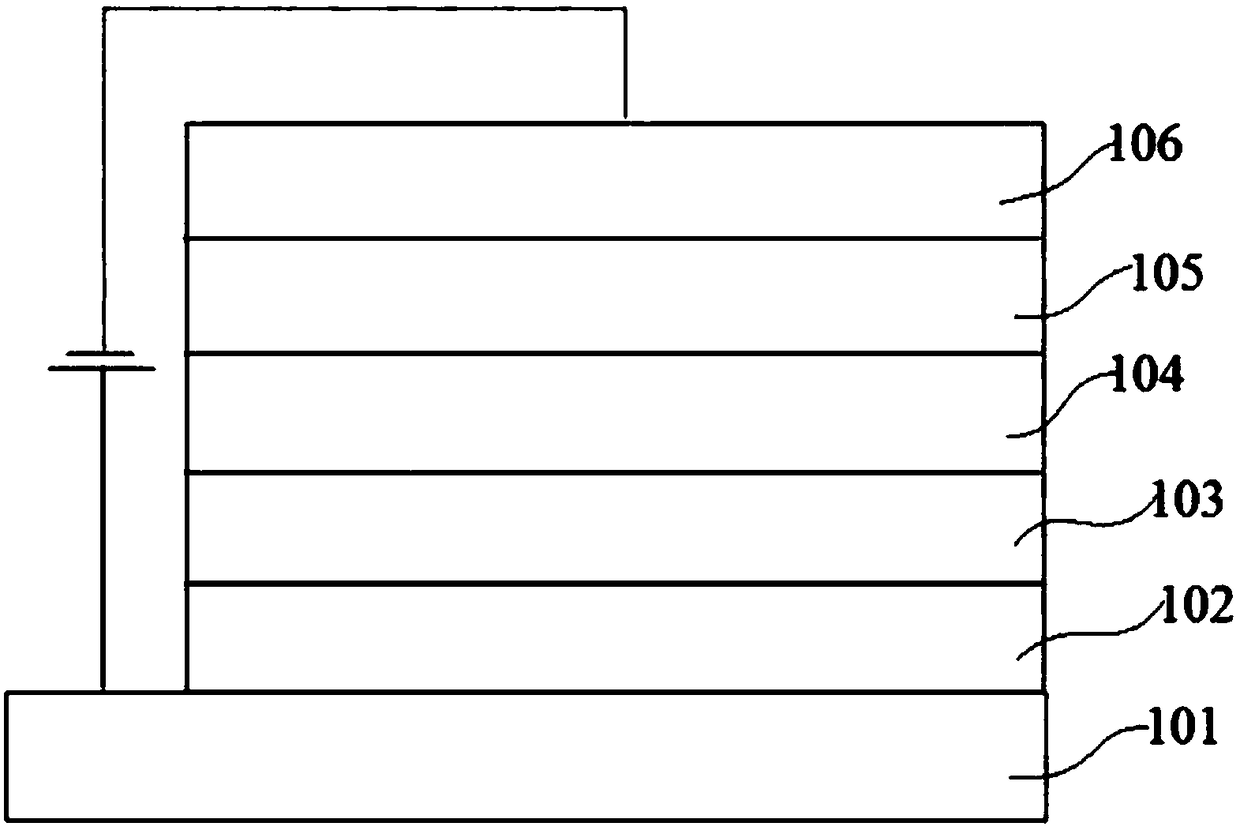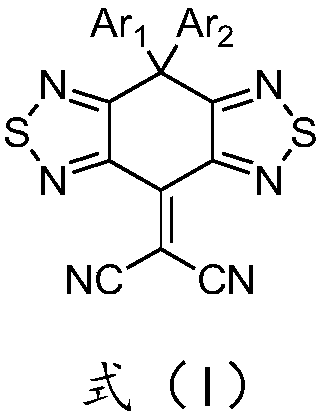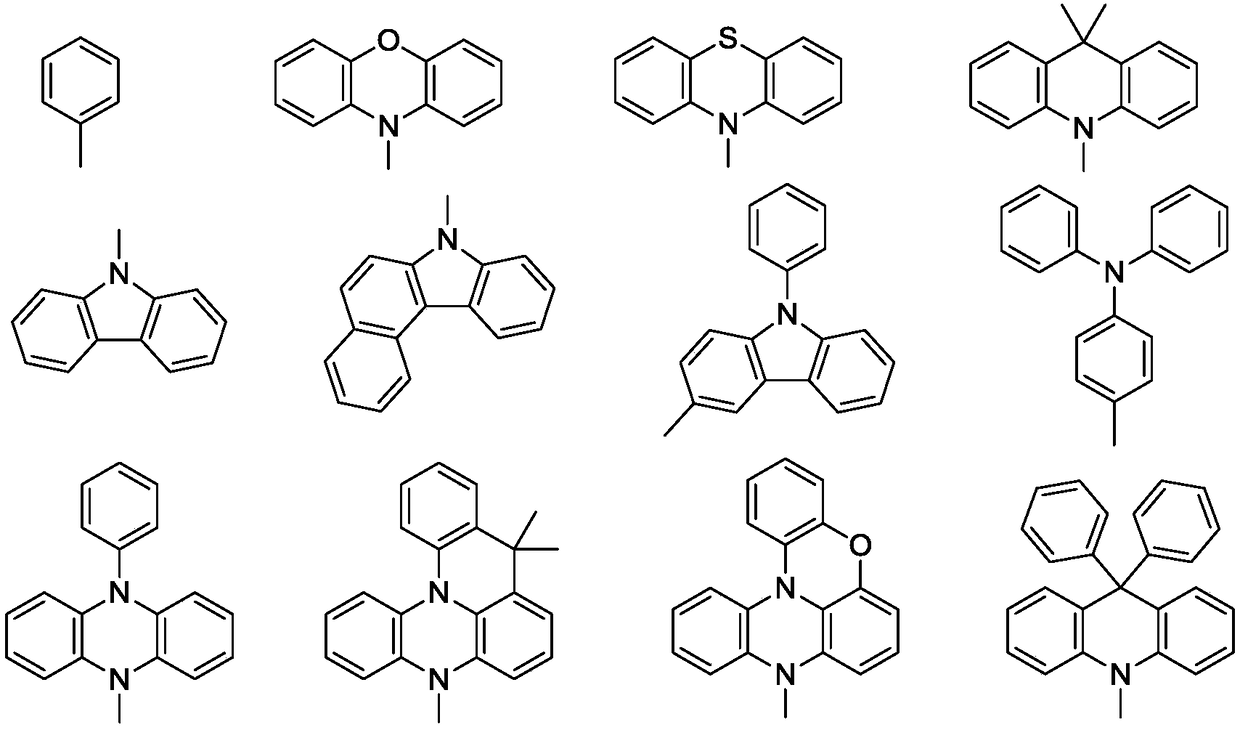Organic electroluminescent material and organic electroluminescent device comprising same
An electroluminescent material and electroluminescent device technology, applied in the direction of luminescent materials, electric solid devices, electrical components, etc., can solve the problems of inability to form a good film, easy crystallization or aggregation between molecules, poor thermal stability, etc. Effects of improved external quantum efficiency, less crystallization, and good film-forming properties
- Summary
- Abstract
- Description
- Claims
- Application Information
AI Technical Summary
Problems solved by technology
Method used
Image
Examples
Embodiment 1
[0031] The present embodiment provides a kind of organic electroluminescent material, shown in its following formula (I):
[0032]
[0033] Among them, Ar 1 and Ar 2 Both are aromatic substituents.
[0034] Wherein, the Ar in formula (I) 1 and Ar 2 The same or different, the Ar in the formula (I) 1 and the Ar 2 Independently selected from any one of the following groups:
[0035]
[0036] The compound represented by the formula (I) is any one of the following structural formulas C01-C61:
[0037]
[0038]
[0039]
[0040]
[0041]
[0042]
[0043]
[0044] The organic electroluminescent material provided in this embodiment has the characteristics of less crystallization and aggregation between molecules, and good film-forming properties, and the rigid groups in the molecules can improve the thermal stability of the material. When the organic electroluminescent material is used as the doping material of the light-emitting layer of the OLED de...
Embodiment 2
[0046] This example provides the preparation method of some compounds in C01-C61 in Example 1.
[0047] Preparation of Compound 1:
[0048]
[0049] Preparation of Intermediate 1: In a 1L three-neck flask, add raw materials benzobisthiadiazole (89.7g, 0.40mol), ethylene glycol (27.9g, 0.45mol), 3.0g p-toluenesulfonic acid and 450mL xylene, Heated to reflux, and the water separator refluxed for 10 hours of reaction. After the reaction, wash with water, separate liquids, desolventize the organic phase under reduced pressure, perform column chromatography, and recrystallize from toluene petroleum ether to obtain a brown solid intermediate 1 with a HPLC purity of 99.4% and a yield of 60.3%, MS (m / s): 224.22.
[0050] Preparation of Intermediate 2: In a 1L three-necked flask equipped with a constant pressure dropping funnel, metal magnesium (5.1g, 0.21mol) was added, p-bromoiodobenzene (56.6g, 0.20mol) was dissolved in 300g tetrahydrofuran, and Put it in a constant pressure d...
Embodiment 3
[0165] This embodiment provides an application of an organic electroluminescent material, such as the application of the organic electroluminescent material described in Embodiment 1 in at least one functional layer of an organic electroluminescent device.
[0166] Such as figure 1 As shown, this embodiment also provides an organic electroluminescent device, which includes an anode 101, a hole transport layer 102, a light emitting layer 103, an electron transport layer 104, an electron injection layer 105 and a cathode 106; wherein, in the The hole transport layer 102, the light emitting layer 103, the electron transport layer 104, the electron injection layer 105 and the cathode 106 are sequentially stacked on the anode 101; Luminescent material.
PUM
 Login to View More
Login to View More Abstract
Description
Claims
Application Information
 Login to View More
Login to View More - R&D
- Intellectual Property
- Life Sciences
- Materials
- Tech Scout
- Unparalleled Data Quality
- Higher Quality Content
- 60% Fewer Hallucinations
Browse by: Latest US Patents, China's latest patents, Technical Efficacy Thesaurus, Application Domain, Technology Topic, Popular Technical Reports.
© 2025 PatSnap. All rights reserved.Legal|Privacy policy|Modern Slavery Act Transparency Statement|Sitemap|About US| Contact US: help@patsnap.com



